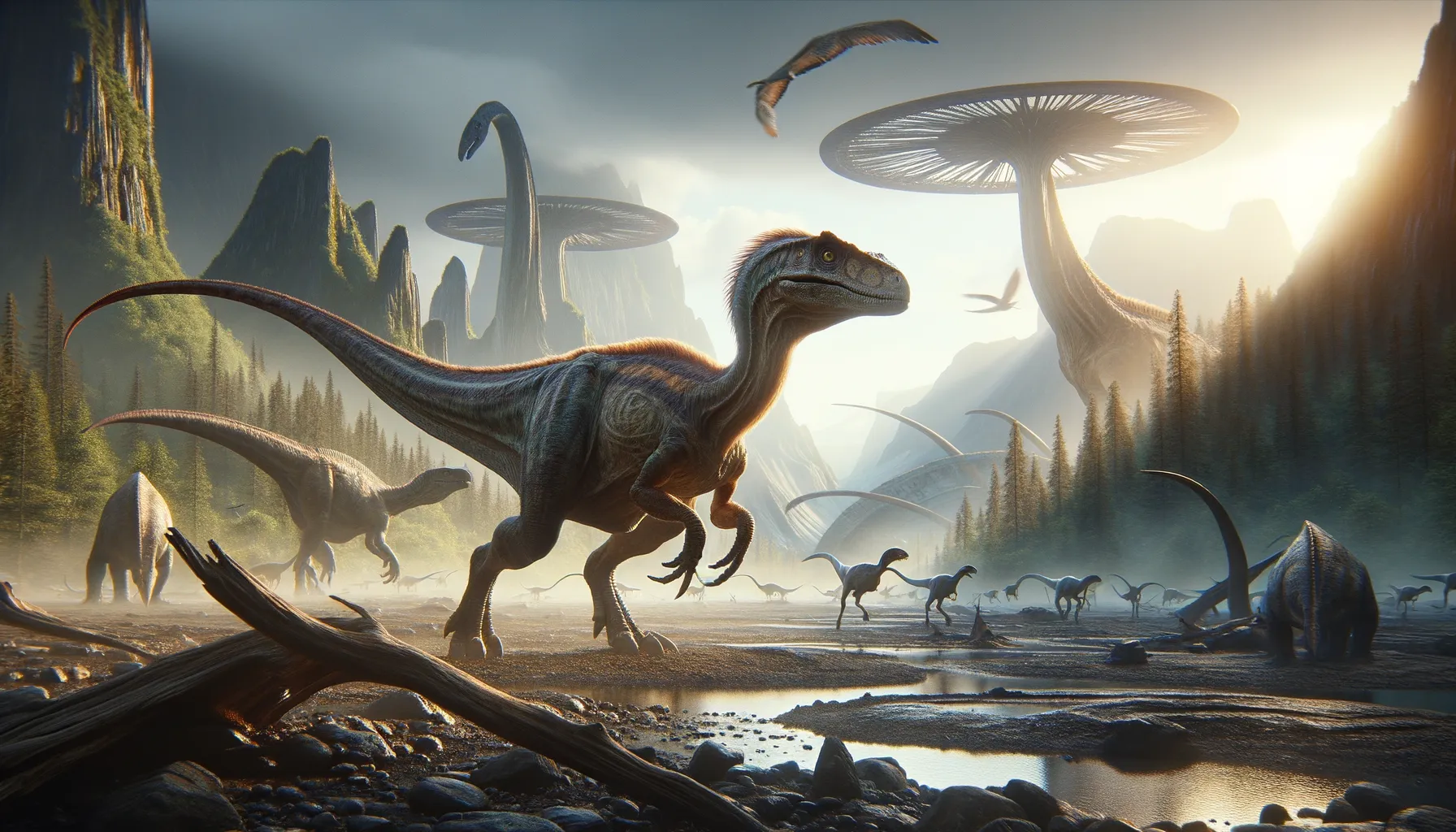
Qiupalong
A swift predator with a bird-like grace.
Period
Cretaceous
Length
Measured around 2 meters in length.
Height
Standing about 1.5 meters tall.
Weight
Approximately 50 to 100 kilograms.
Discovered relatively recently, this dinosaur was an agile theropod that once roamed the land during the Late Cretaceous period. Known for its bird-like features, Qiupalong provided crucial insights into the evolution of theropod dinosaurs, showcasing a fascinating blend of traits found in both traditional dinosaurs and early birds. Its remains, found in China, have helped bridge gaps in understanding the transition from dinosaurs to birds.
Diet
As a theropod, Qiupalong likely had a varied diet. It may have included small animals, insects, and possibly plants. This diversity helped it adapt to various food sources available in its environment.
Hunting
Qiupalong was likely a nimble hunter, relying on its speed and agility to capture prey. It may have used sharp claws and a beak-like mouth to catch and consume small creatures. Its hunting strategy could have involved stalking prey stealthily and striking quickly.
Environmental challenges
During the Late Cretaceous, Qiupalong faced significant environmental challenges, including climate fluctuations and shifting habitats. The landscape was marked by periodic volcanic activity, which impacted its ecosystem. As natural disasters altered its surroundings, Qiupalong had to continuously adapt to the evolving terrain and changes in prey availability. These challenges shaped its evolutionary path and survival strategies.
Speed
Remarkably agile for its size.
Lifespan
Estimated to be around 15-20 years.
First discovery
Unearthed in Henan Province, China in 2009.
Fun Facts
- Qiupalong is a dinosaur that lived during the Late Cretaceous period, around 80 million years ago.
- It was discovered in the Qiupa Formation in China, which is how it got its name.
- Qiupalong was a small, bird-like dinosaur belonging to the group known as ornithomimosaurs, often called 'ostrich dinosaurs' due to their resemblance to modern ostriches.
- This dinosaur was likely a fast runner, using its long legs to escape predators or search for food.
- Qiupalong had a beak-like mouth and may have been an omnivore, eating plants, insects, and small animals.
- Its fossils were first described in 2011, making Qiupalong a relatively recent addition to our understanding of dinosaur diversity.
- The discovery of Qiupalong helps scientists learn more about the geographic distribution of ornithomimosaurs across ancient Asia.
Growth and Development
Qiupalong experienced significant growth early in life, rapidly developing physical traits that aided in hunting and survival. Its bones showed signs of fast growth, indicating a period of rapid development until reaching maturity. Juvenile Qiupalong likely spent time in protected areas, gradually learning the skills essential for survival. Its development included honing hunting techniques and adapting to the environment.
Habitat
Qiupalong inhabited varying terrains, including forests and open plains. It thrived in areas with abundant vegetation, providing cover and resources. The climate was likely warm, with seasonal variations influencing the availability of water and food sources. Adaptations allowed Qiupalong to navigate these habitats effectively, showcasing a remarkable ability to live in diverse environments.
Interaction with other species
In its ecosystem, Qiupalong interacted with a variety of species, both prey and predators. Its agility and size allowed it to coexist with larger dinosaurs, likely avoiding direct competition. It may have formed symbiotic relationships with certain species, benefiting mutually from shared environments. Qiupalong's presence influenced the dynamics of its habitat, playing a role in maintaining ecological balance.
Natural lifespan
Qiupalong lived an average of 15-20 years in the wild.
Reproduction
Qiupalong likely laid eggs, with nesting behavior similar to modern birds. Nesting sites would have been chosen carefully to ensure safety from predators and environmental hazards. Parental care might have included guarding nests and providing warmth. This reproductive strategy helped ensure the survival of offspring, promoting continuity of the species.
Social behaviour
Qiupalong may have exhibited social behaviors within small groups or family units. Communication and interaction could have played a role in hunting and raising young. The benefits of social living included shared responsibilities and enhanced protection. Such behaviors would have strengthened bonds and increased survival odds in a challenging environment.
Fossil locations
The primary fossil remains of Qiupalong were discovered in the Qiupa region of Henan Province, China. These discoveries significantly contributed to our understanding of feathered theropods. The fossils date back to the Late Cretaceous period, providing essential data on the evolution of bird-like dinosaurs. Further research in this region continues to yield new insights into Qiupalong's life and era.
